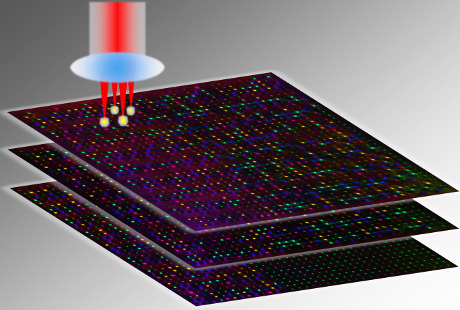Some organisations, such as museums, libraries and national archives, need to store data for decades, or even centuries.
Current magnetic hard-drives have a shelf life of up to seven years, however, and solid-state drives last for up to ten. Optical media, such as Blu-Ray disks, can last up to 15 years.
This means that in order to keep records for very long periods of time, organisations must constantly maintain and replace their storage media.
But a new experimental technique, which uses lasers to write data in to glass, could lead to storage media that lasts for “millions of years”, its inventors claim.
Earlier this year, a joint project between the University of Southampton’s Optoelectronics Research Centre and Eindhoven University of Technology, successfully demonstrated the ability to record and read data etched onto nanostructured glass, known as fused silica or fused quartz.
This is glass in its purest possible form, made by fusing and compacting quartz at high temperatures. The material is already used in fibre optic cables, due to its outstanding optical and thermal qualities.
But because fused silica is so compact, it is also extremely durable. According to Dr Jingyu Zhang, who led the project, a disk made of the material can withstand temperatures of up to 1,000 degrees Celsius.
“If an asteroid were to hit earth and our buildings wouldn’t survive, these would survive,” Dr Zhang claims. “We could pass on our heritage to future generations – or aliens.”
Data in five dimensions
Zhang and his collaborators took a unique approach to encoding data in the fused silica.
In conventional optical media, such as a DVD, data is encoded in binary – i.e. ones and zeros – arranged in one or two layers of laser-etched ‘dots’. Each ‘dot’ within a DVD is represents one bit of information.
By contrast, the technique that Zhang et al. developed encodes ten bits of information in each dot. It does this by using five dimensions of each dot –the three directional dimensions, i.e. its poition, plus its size and the direction it is pointed in.
“Writing to DVDs is like storing data on a piece of paper,” explains Dr Zhang. “But this method is like using a whole book. We can record data on thousands of layers, theoretically.”
In a paper presented, the team showed that 360 Terabytes – one and a half times the capacity of the US Library of Congress – could theoretically be stored on a disc the size and thickness of a CD.
In practice, the researchers have so far managed to write a 300kb text file onto a fused silica crystal. They did this using an ultra-fast laser to etch “nanostructured” dots, five micrometers apart.
Currently, the only way to read the data back is by using a microscope and a polariser – a device that filters light.
The main barrier to commercialisation of the technology, says Zhang, is the availability of affordable reading equipment, and the University of Southampton is now working on the problem.
But commercial applications, such as government archiving or storage in cloud computing, are not that far way, Zhang believes. “The material is already being used in fibre optics so you can easily assemble it with current optical systems," he says. “I think it will be three or four years before we start to see it used [for storage]."







